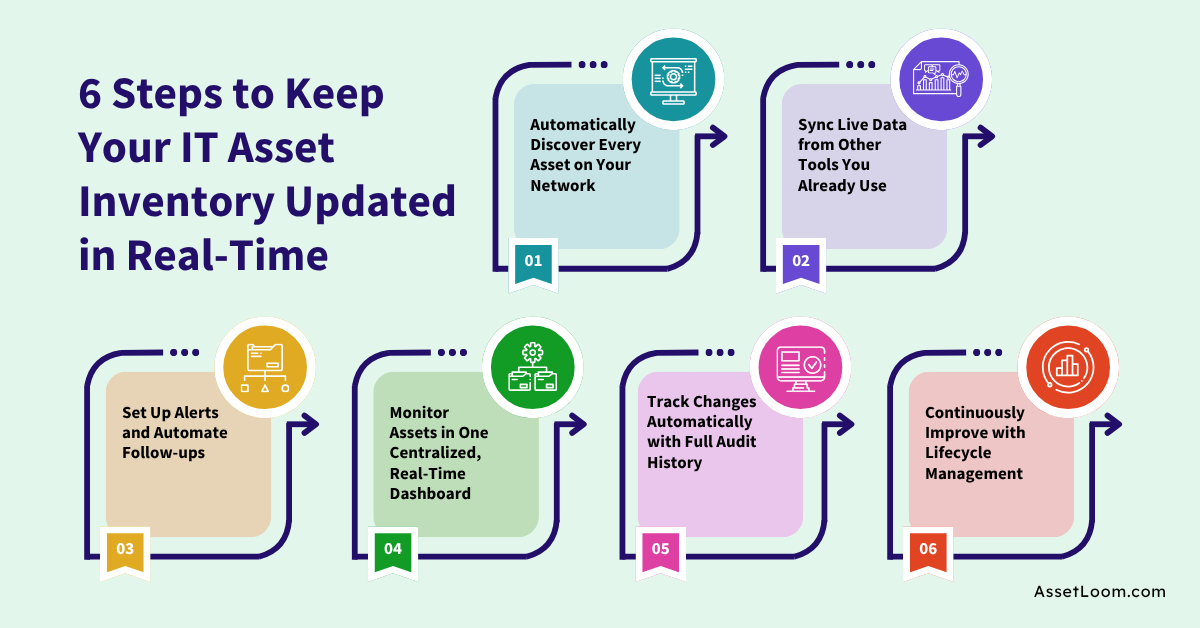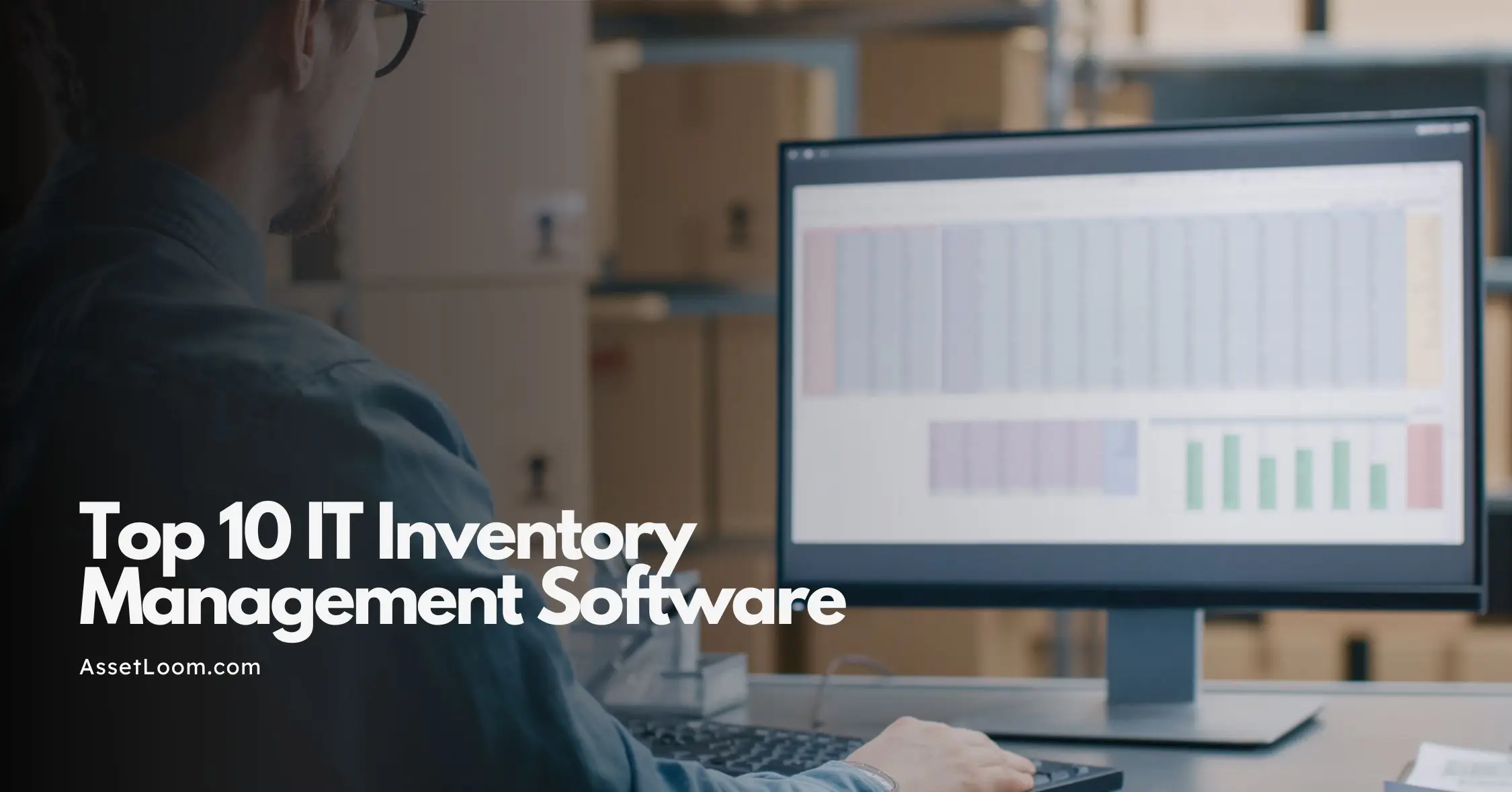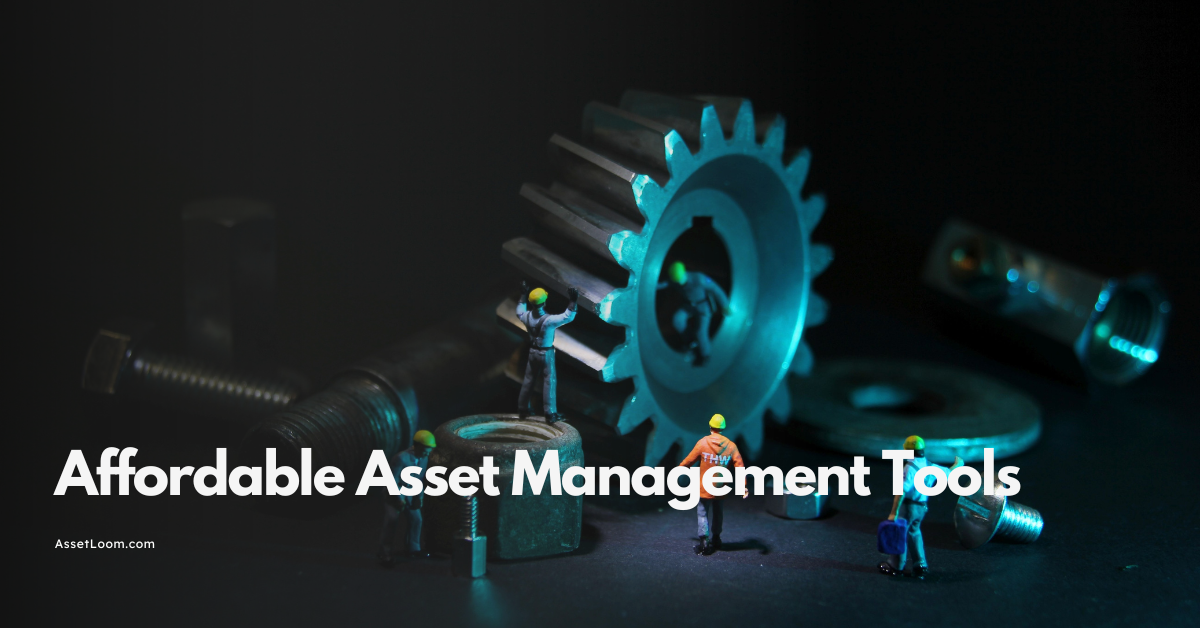How to Keep Your IT Asset Inventory Updated in Real-Time
Keeping your IT asset inventory updated in real time isn’t about working harder. It’s about putting the right system in place that does the tracking for you.
Keeping your IT asset inventory accurate is a constant challenge, especially in environments where devices, software, and users change frequently. Traditional methods like spreadsheets or manual updates can't keep up, which leads to gaps, errors, and outdated records.
Real-time IT inventory management solves this by ensuring that every asset update whether it’s a new device, software installation, location change, or employee reassignment; is captured automatically as it happens. This gives IT teams full visibility, improves decision-making, and helps prevent issues related to security, compliance, or wasted resources.
In this blog, we’ll explain what real-time inventory management really means, why it matters, and how you can keep your IT inventory accurate using the right tools and practices, without adding complexity to your workflow.
What Real-Time IT Inventory Management Actually Means
Real-time IT inventory management means your asset data is always current. Instead of waiting for someone to manually update records after changes happen, your system tracks updates automatically as they occur. This includes changes like:
- New hardware or software added
- Devices reassigned to different users or locations
- License expirations or renewals
- Assets being retired, lost, or decommissioned
The goal is simple: to always know what you own, where it is, who’s using it, and what condition it’s in without delays or missing information.
Key elements of real-time inventory:
- Automated discovery: Your system actively scans the network and connected services to detect devices and software, without needing manual input.
- Live syncing across systems: Any changes made in connected tools like MDMs or service desks are instantly reflected in your inventory.
- Instant alerts for changes: When an asset is moved, reassigned, or updated, your team gets notified or sees the update in real time.
- Centralized visibility: Everything is tracked in one place, so teams don’t have to check multiple systems or guess.
Real-time inventory isn’t just a feature. It’s a smarter way of working that reduces errors, saves time, and helps IT teams stay ahead of problems instead of reacting after they happen.
Why Real-Time Inventory is Hard to Maintain Without the Right Tools
Keeping your IT inventory updated in real time sounds simple in theory, but without the right system in place, it’s nearly impossible to do reliably.
Here’s why many organizations struggle:
- Manual updates are slow and error-prone: Relying on spreadsheets or manual tracking means there’s always a delay. People forget to update records, miss small changes, or input incorrect data. Even the most organized team can't keep pace with frequent changes.
- Data is spread across multiple systems: Assets are tracked in different places; an MDM tool, procurement software, ticketing system, cloud platform. Without integration, your inventory becomes fragmented and outdated quickly.
- No visibility into remote or hybrid environments: With devices being used from home, across offices, or in the field, tracking assets manually becomes even harder. You can’t update what you can’t see.
- Missed alerts lead to avoidable problems: When your system doesn’t notify you of expiring licenses, maintenance due dates, or retired devices, small issues can turn into bigger risks like compliance violations or security gaps.
- Inconsistent processes across teams: Without clear systems or automation in place, different teams might track assets in different ways or not at all leading to gaps and duplicated efforts.
These challenges aren't just operational annoyances. They lead to real business risks: overspending on unused licenses, failing audits, or exposing the network to unmanaged devices.
The solution starts with a system built to handle real-time updates automatically and reliably without adding more work for your team.
Key Features You Need to Keep IT Inventory Updated in Real Time
To maintain a real-time IT inventory, you need more than a static list of assets. You need a system that’s built to detect, update, and alert you automatically—without relying on manual input.
Here are the key features to look for in any IT inventory management solution:
1. Automated Asset Discovery
Your system should automatically detect and add new devices and software as soon as they appear on the network. This eliminates the need for manual data entry and ensures no asset goes untracked.
Look for:
- Network scanning and device detection
- Software and license discovery
- Support for Windows, macOS, mobile, and virtual devices
🔧 Visual Suggestion: Screenshot of an asset discovery dashboard showing newly added devices.
2. System Integrations
A real-time inventory system should connect with the tools you already use like MDM platforms, service desks, and cloud systems so data stays in sync across your entire IT environment.
Common integrations to look for:
- Jamf Now (for Apple device management)
- Jira (for IT service management and asset linking)
- Identity providers like Google Workspace or Azure AD
3. Real-Time Notifications and Alerts
The system should instantly notify you when something important changes—like an asset being reassigned, reaching end-of-life, or needing license renewal.
Examples include:
- License expiration alerts
- Maintenance schedule reminders
- Asset reassignment or disposal tracking
4. Centralized Dashboard with Live Data
A clear, central dashboard helps teams monitor all assets in one place, with real-time updates on status, ownership, and location.
Look for:
- Custom views for different roles (IT, finance, compliance)
- Filters by department, location, or asset type
- Built-in reporting tools
5. Complete Audit History
Every action taken on an asset should be logged automatically. This supports compliance, accountability, and historical tracking.
Look for:
- Change logs with time stamps
- User and system actions tracked
- Exportable audit reports
How to Keep Your IT Asset Inventory Updated in Real-Time with AssetLoom
Keeping your IT asset inventory updated in real time isn’t about working harder. It’s about putting the right system in place that does the tracking for you. AssetLoom is designed to support that process from start to finish. Here’s how it works in practice:

Step 1: Automatically Discover Every Asset on Your Network
The first step to real-time accuracy is knowing exactly what you have—and keeping that list current without relying on manual updates.
With AssetLoom:
- The system automatically scans your network and connected platforms to identify every asset: desktops, laptops, mobile devices, and installed software.
- Devices are added to your inventory the moment they appear—no data entry required.
How this helps:
- You never start from an outdated list.
- Hidden or rogue devices don’t slip through the cracks.
- No time wasted on spreadsheet updates or missed additions.
Example: A new laptop is issued to a new hire. As soon as it connects to the network, AssetLoom detects it and logs it; no IT ticket or form required.
Step 2: Sync Live Data from Other Tools You Already Use
Once assets are detected, the key to keeping that data accurate is constant syncing—not just one-time imports. AssetLoom connects with your existing tools to pull in updates automatically.
Connected tools include:
- Jamf Now: Apple device data is synced in real time.
- Jira: Assets are linked to tickets for traceability.
- Google Workspace: User-device relationships stay up to date.
How this helps:
- When a user switches devices, the change is reflected automatically.
- Support tickets and asset history are connected, reducing guesswork.
- You get a single source of truth, not five different spreadsheets.
Step 3: Set Up Alerts and Automate Follow-ups
Real-time tracking isn’t just about knowing what’s in your inventory. It’s also about knowing what needs attention right now. AssetLoom helps you stay proactive.
You can set alerts for:
- Expiring licenses
- Inactive or missing devices
- Warranty expirations
- Scheduled maintenance
How this helps:
- You get notified before issues become problems.
- You don’t have to manually check for due dates or lost devices.
- Nothing slips through the cracks.
Example: A license is about to expire in 30 days. AssetLoom sends an alert to the asset owner and IT admin with renewal options.
Step 4: Monitor Assets in One Centralized, Real-Time Dashboard
Once discovery and syncing are in place, real-time inventory becomes about visibility. AssetLoom provides a single dashboard where all data comes together in real time.
What you get:
- Custom views by department, location, lifecycle stage
- Filters for asset type, status, or assigned user
- Live updates with no need to refresh or reload data
How this helps:
- You always know what’s where, who’s using it, and what condition it’s in.
- Teams across IT, finance, and operations are working from the same data.
- Reports can be generated instantly for audits, reviews, or planning.
Step 5: Track Changes Automatically with Full Audit History
Every action taken on an asset; assigning it, relocating it, retiring it; is logged in AssetLoom automatically. You don’t have to manually track movements or status updates.
Features that support this:
- Detailed change logs with timestamps
- User-based tracking (who made what change)
- Exportable audit reports
How this helps:
- Audit readiness without prep time
- Clear accountability and traceability
- Peace of mind that every asset event is recorded
Step 6: Continuously Improve with Lifecycle Management
Finally, keeping your inventory accurate long-term requires lifecycle visibility—from purchase to retirement. AssetLoom helps you manage each phase.
Features include:
- Asset lifecycle tracking (procurement, deployment, support, end-of-life)
- Depreciation insights
- Retirement alerts
How this helps:
- Assets don’t stay in your system past their useful life
- You avoid surprise costs or missing equipment
- Financial and operational planning is more accurate
Keeping your IT inventory updated in real time doesn’t mean adding more work to your plate. You can set up a system like AssetLoom that automates the heavy lifting asset discovery, syncing, alerts, visibility, and tracking. So your team always has the latest, most accurate view of your environment.
With AssetLoom, real-time inventory becomes something that just works in the background, while you focus on running IT.
Best Practices to Maintain Real-Time IT Inventory
Even with a powerful tool like AssetLoom, your internal habits and setup matter. Here are simple ways to keep your inventory accurate, clean, and real-time:
- Assign Clear Ownership: Make someone responsible for managing asset data per team, location, or role. This prevents gaps or duplicated work.
- Use Automation and Standard Naming: Let AssetLoom handle asset discovery and syncing. Then apply consistent labels or tags to keep records organized and searchable.
- Set Smart Alerts: Use real-time alerts for more than issues, set reminders for inactive assets, upcoming renewals, or maintenance.
- Integrate with Your Existing Tools: Connect AssetLoom with Jira, Jamf Now, or Google Workspace to keep everything in sync. No double entry, no silos.
- Run Quick Audits Regularly: Filter for inactive, unassigned, or duplicate assets. Use reports to catch anything missing or outdated.
- Include in Onboarding & Offboarding: Assign and reclaim assets through AssetLoom as part of hiring and exit processes. This keeps inventory accurate from day one.
- Keep It Simple: Use dashboards, filters, and workflows that match your team's real needs. Avoid over-complicating your setup.
A few simple practices, combined with the automation in AssetLoom, are enough to keep your IT inventory real-time and reliable without adding more work.
Final Thought
Keeping your IT asset inventory updated in real time doesn’t have to be complicated. With the right tools and a few smart practices, it becomes a reliable, low-maintenance part of your daily operations.
AssetLoom helps you get there by doing the hard work in the background; automatically discovering assets, syncing data from your existing tools, alerting you to changes, and giving your team full visibility across your environment.
You get fewer surprises, better decisions, and stronger compliance, without chasing down spreadsheets or missing information. Real-time IT inventory isn’t just about tracking things. It’s about working smarter, staying secure, and being ready for whatever comes next.

Related Blogs
Subscribe for Expert Tips and Updates
Receive the latest news from AssetLoom. right in your inbox


